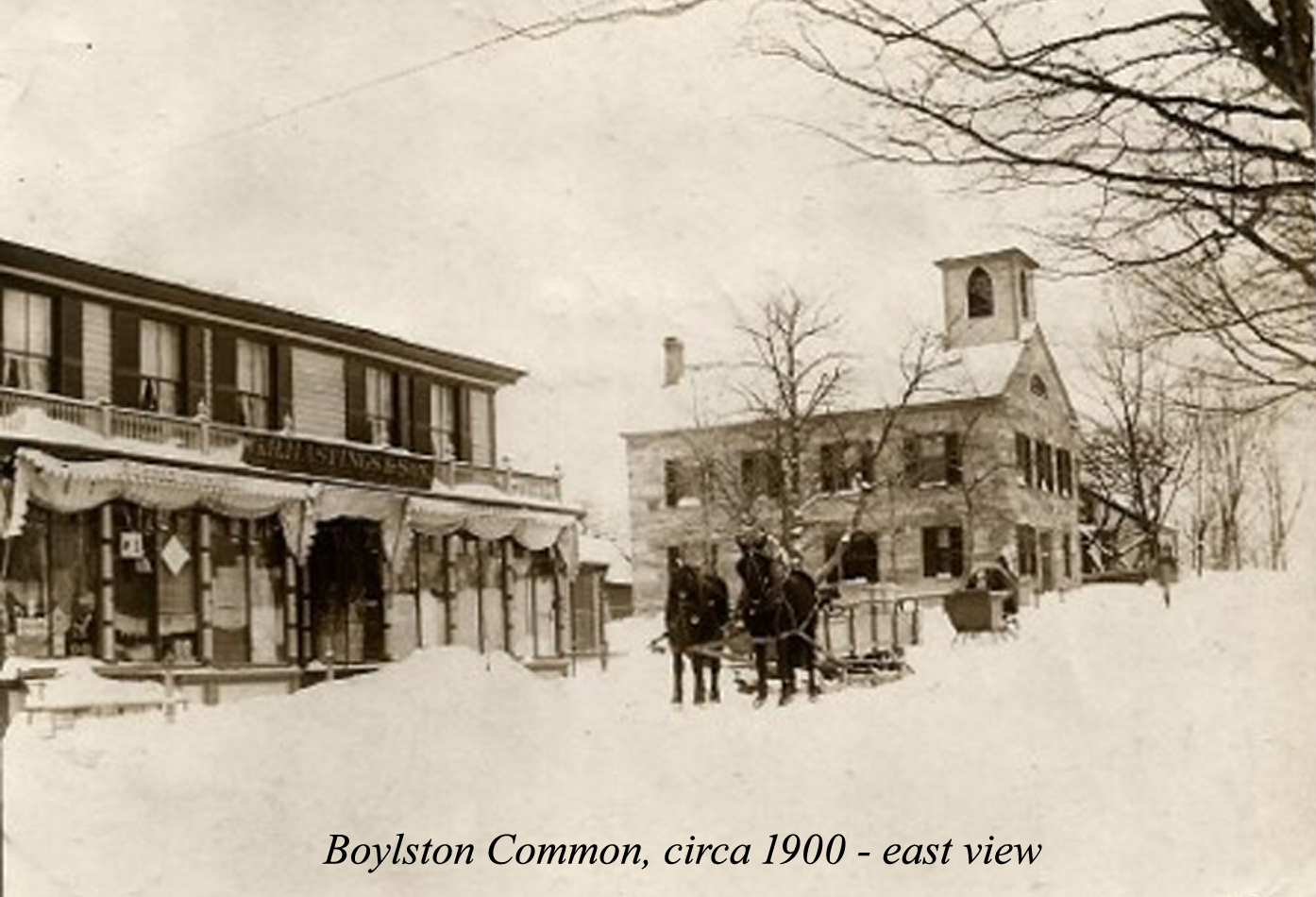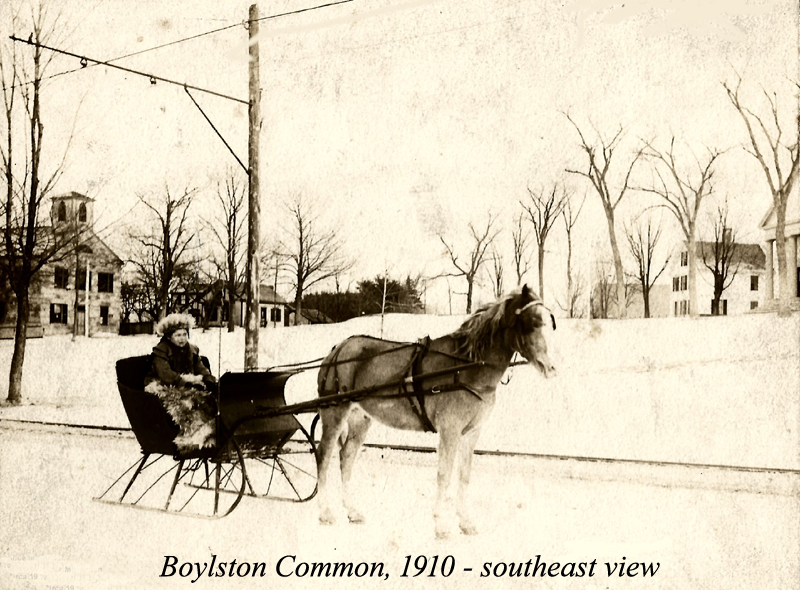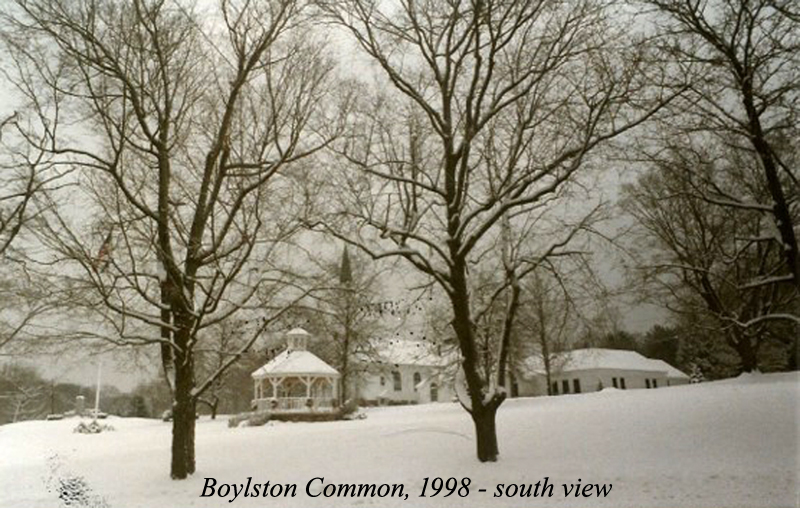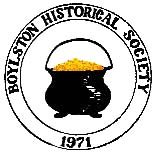Town Common - Boylston
The Boylston Common
By Inga Milbauer

The American Heritage Dictionary of the English Language describes a common as “a tract of land, usually in a centrally located spot, belonging to or used by a community as a whole.” In the earliest European settlements in New England, the place specifically reserved for the meeting house became the common. The meeting house originally served dual purposes, as a house of worship and a place for public affairs, until the 1833 amendment to the Massachusetts State Constitution separated church and state. As people-built homes and businesses adjacent to the common, it became the center of the town.
The original Boylston Common was situated on the north side of the Old Burial Ground, approximately a tenth of a mile south of the location of the present common. The land for the First Meeting House and the burial ground was donated in 1742 by Lieutenant Eleazar Taylor, one of Boylston’s earliest settlers. The Meeting House was built in 1743, with its main door facing the Old Burial Ground. It served as the meeting house for 50 years. On the southeastern corner of the Common the Hearse House was built in 1743. The first school house was located on the northeasterly corner. The Taylor Tavern and Store, located opposite the Meeting House on Main Street, opened in 1760. In 1772, the First Noon House, or Sabbath House, was built behind the Meeting House. In this period before stoves were used in churches, worshippers would go there to warm themselves between services and share the noontime meal.On the southeastern corner of the Common the Hearse House was built in 1743. The first school house was located on the northeasterly corner. The Taylor Tavern and Store, located opposite the Meeting House on Main Street, opened in 1760. In 1772, the First Noon House, or Sabbath House, was built behind the Meeting House. In this period before stoves were used in churches, worshippers would go there to warm themselves between services and share the noontime meal.
The Second Meeting House, with a bell tower and a clock, was built in 1793 on the site of the present Sawyer Memorial Library. The area we now know as the Boylston Common became the “New Common” at this time. The second Noon House was built in 1796 near the spot where the current War Memorial stands. It stayed in use until 1835. The Third Meeting House was built in 1835 where the First Congregational Church now stands. It was first used on December 10th by the church members, who enjoyed their first meeting house with heating facilities. Unfortunately, the Third Meeting House burned down in 1924. A Fourth (and final) Meeting House was built in 1927 on this site overlooking the Boylston Town Common.
In the photograph above, we see the Town Hall in the background and the original Center Store, known then as the Corner Store, on the left. The Town Hall was built in 1830 with proceeds from a grant by Ward Nicholas Boylston. The Corner Store was built in 1811 by Deacon Jonathan Bond Sr. At the time of this photograph, it was owned by George Reed Hastings who ran the store from 1888-1912. In the early 1900s Boylston Common was the bustling center of the town with two general stores, a millinery shop, post office, the public library, town hall, and the meeting house.


The Boylston Town Common remains the focal point of the town, serving as the center for festivities and commemorations, such as the Memorial Day celebrations. It provides residents with a beautiful location for the Boylston Deli Cafe, Sawyer Memorial Public Library, First Congregational Church, and our Historic Town Hall which serves as a meeting place for various local organizations and houses our Boylston Historical Museum.
______________
Acknowledgements:
Boylston Historical Series, Bruce Filgate, 2012
Boylston Historical Society & Museum, Inc. Photograph Collection, 7 Central Street, Boylston, Worcester County, Massachusetts
Editor, Nancy A. Filgate, Boylston Historical Society & Musuem, Inc, Director, Boylston, Worcester County, Massachusetts
https://ahdictionary.com
https://www.newenglandhistoricalsociety.com/tour-new-englands-uncommon-town-commons
Article originally published as one of BHSM "Fridays' Fascinating Finds", December 2020
